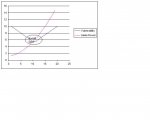I was never really a player in 1e. DM only.
Not that that stopped me from playing "solo" and just rolling up random dungeons, combats, and treasure.
Although, even with players, that was often all there was to it.
In those days I don't think I/we measured success by character advancement, per se, but on how many of the old modules were completed.
So, essentially, the campaign was over when the characters advanced beyond the highest level of any of the dungeons I owned (with the top end being either Queen or Tomb).
I don't really think it's all that useful to benchmark my desires as a player now to what engaged me when I was 10, 12, 16...


![Devious :] :]](http://www.enworld.org/forum/images/smilies/devious.png)
